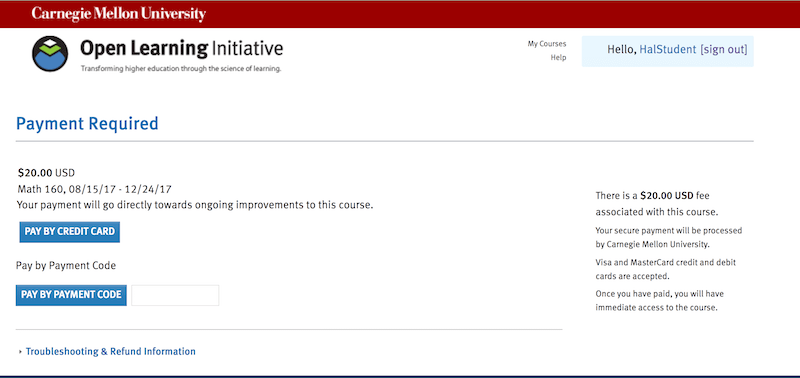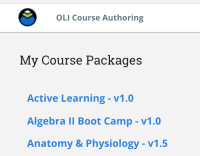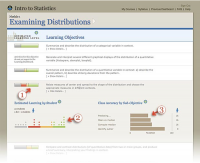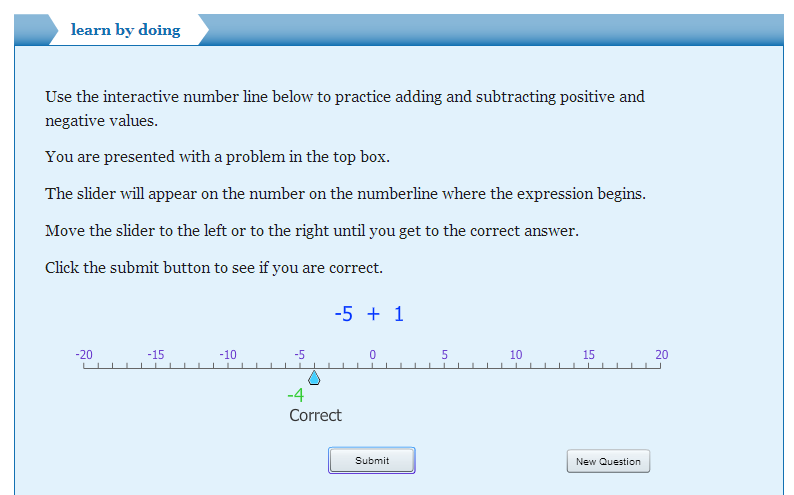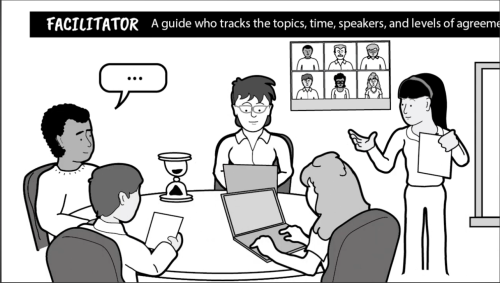This course is aligned to the general content contained in the Certified Associate in Healthcare Information and Management Systems (CAHIMS®) certification administered by the Healthcare Information and Management Systems Society (HIMSS), and includes expanded content related to the Healthcare and Healthcare IT industry. Depending on the option chosen, the course includes a certificate of completion and continuing education hours upon satisfactory completion.
Healthcare IT Foundations
Price range: $140 through $279
- Description
- Additional information
- What students will learn
- Learning objectives by module
- Course assessments, activities, and outline
- Other course details
- System requirements
- Included instructor tools
- Open & Free features
Description
Carnegie Mellon University and The Healthcare Information and Management Systems Society (HIMSS) have collaborated to offer this Healthcare IT Foundations (HITF) course. The recently updated course offers an overview of healthcare, health information technology, and health information management systems. The focus is on the role and responsibilities of entry-level healthcare IT specialists in each phase of the health information management systems lifecycle. The curriculum is intended to align with the Certified Associate in Healthcare Information and Management Systems (CAHIMS®) certification administered by HIMSS. This course is designed for students who have previous experience in IT or healthcare and it is designed to serve as a pathway into healthcare IT careers. It also provides a broad understanding of healthcare IT for individuals in non-IT related roles in healthcare.
Healthcare IT Foundations is available in several formats:
FOR INDEPENDENT STUDENTS: Full course content. Earn a certificate of completion and continuing education hours upon satisfactory completion; certificate and hours are administered by HIMSS. This self-paced course operates without a teacher and without a schedule. Choose this option from the menu for current pricing.
FOR TEACHERS: Use this course with your students as a textbook replacement or supplemental materials. Instructors have three options for using HITF course with their students, and pricing can be found by selecting the appropriate option in the menu:
- Full course with certificate of completion and continuing education hours included. This option is for instructors who want to offer their students both institutional credit for the class as well as HIMSS certificate of completion and continuing education hours. Also includes all content, teacher’s Learning Dashboard, gradebook, roster management, LMS integration, and support.
- Half course, Part 1: Introductory unit and first 4 units of the course. Includes first four content units, teacher’s Learning Dashboard, gradebook, roster management, LMS integration, and support. No certificate of completion is included for a half course.
- Half course, Part 2: Introductory unit and last 5 units of the course. Includes last five content units, teacher’s Learning Dashboard, gradebook, roster management, LMS integration, and support. No certificate of completion is included for a half course.
- Topics Covered:
- Healthcare Environment
- Healthcare Delivery Organizations
- Healthcare Payment Systems
- Roles of Healthcare Professionals
- Government Regulation
- Technology Environment
- Health IT Applications
- Electronic Health and Medical Records
- Clinical and Financial Applications
- Consumer Health Informatics
- Systems Architecture and Components
- Healthcare Data Exchanges and Standards
- Healthcare Information and Management Systems (HIMS) Analysis and Design
- Clinical Process and Workflow Analysis
- Business, User and Technical Requirements
- Usability and Human Factors
- Systems Analysis, Planning and Design
- Project Management
- Advanced Topics in Clinical Informatics
- Introduction to Clinical Informatics
- Advancing Healthcare Quality and Safety Through Clinical Informatics
- Data Analytics in Healthcare
- How Data Analytics Works
- Quality Improvement Tools and Visualizations
- HIMS Selection and Acquisition
- Systems Selection
- Systems Acquisition
- Interoperability Standards and Certification
- HIMS Implementation and Management
- Systems Implementation
- End-user Training and Support
- Systems Monitoring and Maintenance
- Privacy and Security
- Privacy, Security and Confidentiality Policies
- IT Security Principles and Strategies
- Security Risk Management and Disaster
- Leadership and Planning
- Leadership and Change Management
- Quality Standards
- IT Strategic Planning
- Professionalism and Communication Skills
- Business and Communications Ethics
- Teams and Team building
- Professionalism and Customer Service
Additional information
| Version | STUDENT FULL COURSE (self-paced for certificate and continuing education hours; no teacher), INSTRUCTOR FULL COURSE (all units plus certificate and continuing education hours), INSTRUCTOR HALF COURSE (Units 1-5), INSTRUCTOR HALF COURSE (Units 1, 6-10) |
|---|
What students will learn
Healthcare IT Foundations can:
- Aid as one resource studying for the (CAHIMS®) exam
- Extend the learner’s knowledge and understanding of basic foundations of healthcare information management systems and applications within their work environment
- Support a way for other healthcare disciplines to gain a basic understanding of healthcare information management systems
- Build a highly desirable background to improve the learner’s career
Learning objectives by module
Unit 2: Healthcare Environment
- Module 2: Healthcare Delivery Organizations
- Describe the administrative and functional organization of entities that deliver healthcare in the United States in both inpatient and outpatient settings.
- Describe the roles of and customers served by various types of healthcare organizations.
- Describe the services provided to unique populations, including underserved populations.
- Explain how healthcare organizations interact with each other and with patients to provide appropriate levels of care.
- Explain how Healthy People 2020 advances health promotion and disease prevention.
- Explain public health and how it has improved healthcare.
- Explain the basic characteristics and organization of the US healthcare delivery system.
- Identify current and future trends in the US healthcare delivery system and their potential impact on healthcare organizations and populations served.
- Module 3: Healthcare Payment Systems
- Analyze factors responsible for escalating healthcare expenditures in the United States.
- Compare and contrast models of healthcare financing in the United States.
- Describe healthcare financing structures, including insurance plans, third-party payers, Medicare, and Medicaid.
- Describe the history and role of the health insurance industry in financing healthcare in the United States.
- Describe the main state and federal laws regulating US healthcare insurance organizations and discuss their impact on the healthcare system.
- Describe the trends in healthcare financing and their impact on various populations.
- Distinguish between public and private funding for healthcare.
- Explain a typical billing process and the use of coding and code sets.
- Identify different fee-for-service and episode-of-care reimbursement methodologies used by insurers in the claims payment process.
- Identify methods of controlling rising medical costs.
- Module 4: Roles of Healthcare Professionals
- Describe the changing roles of and interactions between health professionals.
- Describe the education, training, certification, licensure, and roles of nurses, advanced practice nurses, licensed practical nurses, medical assistants, and medication aides.
- Describe the education, training, certification, licensure, and roles of paramedics, emergency medical technicians, dental professionals, mental health professionals, and case managers and social workers.
- Describe the education, training, certification, licensure, and roles of physicians, including those in primary care and other specialties.
- Describe the primary roles of a health information management professional.
- Explain terms used in healthcare and in health professionals’ education and training, including clinician, patient, disease, and syndrome.
- Identify key elements of an effective job description.
- Module 5: Government Regulation
- Describe key components of the Health Insurance Portability and Accountability Act (HIPAA) and current issues of patient privacy and security in the United States.
- Describe legal aspects of medicine involving the Patient Protection and Affordable Care Act, professional standards in healthcare, and medical malpractice.
- Describe the provisions of the ARRA HITECH Act relative to Adoption of EHRs.
- Describe the provisions of the ARRA HITECH Act relative to meaningful use.
- Explain the roles of accreditation entities, regulatory bodies, and professional associations in healthcare in the United States.
Unit 3: Technology Environment
- Module 6: Health IT Applications
- Describe the impact of developments in public health informatics, bioinformatics, and translational research on healthcare processes and associated ethical concerns.
- Describe the impact of third-party payers on implementation of HIT systems.
- Describe the key trends impacting the development of health IT over the past two decades.
- Describe ways to keep abreast of new developments in health IT.
- Module 7: Electronic Health and Medical Records
- Describe the systems and network requirements to support effective EHR implementation.
- Differentiate an electronic medical record (EMR), an electronic health record (EHR), a computerized patient record (CPR), and a personal health record (PHR).
- Explain how the use of an EHR system can affect patient care, safety, efficiency of care practices, and patient outcomes.
- Explain the components, types, and functions of information systems and how they are used in the healthcare setting.
- Identify attributes and functions of an EHR.
- Module 8: Clinical and Financial Applications
- Describe the overall flow of data throughout the healthcare organization and the healthcare system.
- Describe the purpose, attributes, and functions of specific clinical applications.
- Describe the strategies used by healthcare organizations to ensure integration of functions.
- Explain how electronic information applications are currently used in various healthcare settings.
- Explain the critical elements needed to integrate billing, financial, and clinical systems.
- Identify common barriers to implementation and adoption of healthcare information systems and strategies to overcome these barriers.
- Identify how clinical applications can affect patient care, safety, quality, and efficiency as well as patient outcomes.
- Summarize the administrative, billing, and financial systems in the healthcare environment.
- Module 9: Consumer Health Informatics
- Describe and define consumer health informatics.
- Describe the benefits and challenges of consumer health informatics.
- Describe the emergence of personal health records and their implications.
- Describe the ongoing trends occurring in consumer health informatics and in the consumer health information technology market.
- Describe the role of technology in patient engagement in patient-centered care.
- Module 10: Systems Architecture and Components
- Describe a computer network and how medical and point-of-care devices fit in the system.
- Describe the advantages and limitations of Web services.
- Describe the functions of the main elements of HIT systems architectures and how they interact.
- Describe the general trends in IT infrastructure and architecture in the healthcare environment and how regulations are shaping these trends.
- Module 11: Health Information Exchange and Standards
- Describe secure and private techniques for handling patient information.
- Describe the current standards that are being applied to patient information.
- Describe the principles and methodologies underlying standards for health data interchange regulations and practices.
- Identify ways in which meaningful use requirements support health information exchange.
Unit 4: Advanced Topics in Clinical Informatics
- Module 12: Introduction to Clinical Informatics and Data Analytics
- Describe the field of clinical informatics.
- Describe examples of the ways that clinical informatics can advance healthcare quality and safety.
- Describe how data analytics is used healthcare and how it is beneficial.
- Describe key functions of data analytics.
- Differentiate common quality improvement tools and their associated visualization methods.
Unit 5: HIMS Analysis and Design
- Module 13: Clinical Process and Workflow Analysis
- Analyze a healthcare scenario and identify the components of clinical workflow.
- Analyze an existing workflow process map in terms of the information that could be generated and the sequence of steps that are being communicated.
- Create a process map for a healthcare system (or system component) using correct symbols and conventions.
- Describe the purpose of process analysis and redesign in clinical settings.
- Describe the role of a practice workflow and information management redesign specialist.
- Explain how healthcare process analysis and redesign and meaningful use are related.
- Explain the value of process mapping.
- Interpret standard process mapping symbols and conventions.
- Recognize potential impacts of HIT implementation on workflow and of workflow analysis on HIT implementation.
- Module 14: Business, User, and Technical Requirements
- Describe how business and user requirements relate to each other, and identify strategies to resolve conflicts between different stakeholder requirements.
- Describe the technical requirements of healthcare systems, and describe the roles of businesses and users during a healthcare systems analysis.
- Identify specific formats, standards, and examples of best practices that apply to requirements development and documentation.
- Identify stakeholders and present their roles in the requirements development and validation process.
- Identify the roles and responsibilities of analysts during the development and validation of requirements.
- Module 15: Usability and Human Factors
- Apply methods for measuring mental workload and information overload.
- Describe how human factors analysis can be applied to the study of medical devices.
- Describe the study of human factors as they apply to usability.
- Describe the systems-centered approach to error and patient safety and the different dimensions of the concept of human error.
- Explain how cognitive, physical, and organizational ergonomics can be applied to human factors engineering.
- Explain the impact of HIT usability on user satisfaction, adoption, and workarounds, including error rates and unintended consequences.
- Explain usability and its relationship to HIT systems.
- Explain usability as it pertains to EHRs, and describe common challenges.
- Identify strategies to prevent or address HIT usability obstacles.
- Module 16: Systems Analysis, Planning, and Design
- Describe and compare conceptual models that apply to the design process.
- Describe and compare the three design life cycle models.
- Describe process redesign and key processes in a clinical scenario.
- Describe the concepts of process variations and exceptions.
- Describe the purpose of process analysis.
- Explain the main elements of a user-centered design approach.
- Identify the key elements of readiness assessment.
- Module 17: Project Management
- Describe best practices to support project cost management activities.
- Describe best practices to support project time management activities.
- Describe how project quality is assessed.
- Describe key documents to manage expectations and define success of a project.
- Describe the importance of an organizational approach to IT decision making.
- Describe the key elements of project management.
- Describe the project planning documents and their importance to the project.
- Describe the range and characteristics of HIT projects.
- Identify and describe each component of the project management plan.
- Identify best practices to support project procurement activities.
- Identify the roles and responsibilities of a project manager.
Unit 6: HIMS Selection and Acquisition
- Module 18: System Selection
- Describe the main steps and desired outcomes for the systems selection process.
- Describe the role of the ONC Health IT certification program.
- Describe use cases and relate them to functional requirements.
- Explain the benefits and constraints of systems/software purchase versus leasing or subscription or in-house development based on specific HIT projects and contexts.
- Explain the key steps and criteria in the evaluation process, including interoperability with existing systems and need for customization.
- Identify the key steps and criteria in the proposal selection process in the context of health IT, including systems compliance to healthcare technology standards.
- Interpret user and systems requirements, and evaluate candidate systems and subsystems against these requirements.
- Module 19: System Acquisition
- Describe how leadership, organization, and management encourage change and prepare users for the EHR system.
- Describe the contract negotiation process.
- Describe the EHR system acquisition planning process.
- Describe the process for evaluating an EHR system.
- Describe the process for selecting new technology.
- Module 20: Interoperability Standards and Certification
- Describe benefits and challenges related to EHR systems and health IT certification.
- Describe data and communication standards that support communication between disparate systems.
- Describe health information exchange benefits, challenges, and approaches.
- Describe the roles of key entities involved in establishing standards related to clinical software and medical devices.
Unit 7: HIMS Implementation and Management
- Module 21: Systems Implementation
- Define the steps of the software development life cycle (SDLC) and the purpose and importance of each.
- Describe different models of the SDLC and their key differences.
- Describe the challenges, strategies, and approaches to consider for an effective EHR implementation plan.
- Describe the human, system, and organizational factors that influence the effectiveness of an implementation project.
- Describe the importance of pilot testing and postimplementation processes.
- Describe the roles and characteristics of an effective EHR implementation team.
- Explain user acceptance testing (UAT).
- Identify key elements of the system testing process.
- Module 22: End-User Training and Support
- Construct a lesson plan using appropriate instructional approaches to the needs analysis.
- Describe the characteristics of adult learners and factors that impact training design and learning outcomes.
- Describe the five phases of the ADDIE model of instructional design.
- Identify what training is and what trainers do.
- Write learning objectives that use Bloom’s taxonomy to classify learning from the simplest to most complex.
- Write measurable objectives for a training program.
- Module 23: Systems Monitoring and Maintenance
- Describe effective processes and procedures for system backup and restoration and for system and data decommissioning.
- Explain effective processes and procedures for support and maintenance, including upgrades, of HIT systems.
- Explain ways to create fault-tolerant systems.
Unit 8: Privacy and Security
- Module 24: Privacy, Security Policies, and Compliance
- Describe regulatory requirements for securing electronic health data.
- Describe rules relating to public health agencies and protected health information.
- Describe the background of the HIPAA legislation.
- Describe the key concepts of information security.
- Describe the major changes in privacy and security requirements as a result of HITECH and the reasons the changes were needed.
- Module 25: IT Security Principles and Strategies
- Describe additional wireless security issues.
- Describe common threats to information security.
- Describe safeguards against common security concerns.
- Identify process and technological methods to mitigate information security threats.
- Module 26: Disaster Recovery and Business Continuity
- Describe security requirements encountered in the healthcare setting.
- Explain elements of disaster preparation.
- Explain elements of disaster recovery.
- Explain the concepts of and requirements for risk management.
Unit 9: Leadership and Planning
- Module 27: Leadership and Change Management
- Analyze challenges of leading in a hybrid HIT organization.
- Compare and contrast the concepts and practices that relate to leadership and management.
- Describe the characteristics and competencies of successful managers and leaders in the HIT environment.
- Explain the importance of change management to the success of HIT system implementations.
- Explain the roles of motivation and group dynamics in successful management of HIT implementation.
- Module 28: Quality Standards
- Analyze the ways that health IT can either help or hinder quality improvement.
- Describe how decision support and decision support tools can improve quality of care.
- Describe quality improvement as a goal of meaningful use.
- Describe the basic concepts of reliability as it relates to healthcare.
- Describe the benefits and shortfalls of common types of alerts and clinical reminders.
- Describe the five major considerations in developing a science of safety in healthcare.
- Describe the importance of measuring quality and health IT’s role in quality improvement.
- Describe total quality management.
- Describe what makes organizations highly reliable.
- Explain healthcare quality and quality improvement (QI).
- Explain the components of the healthcare system that have an impact on quality.
- Identify the current challenges in healthcare quality.
- Identify the features of a quality culture and approaches for creating a quality culture.
- Module 29: IT Strategic Planning
- Describe how the business strategic plan intersects with the IT strategic plan, and the roles of business and IT stakeholders.
- Describe the role of the IT strategic plan and how the plan impacts all aspects of the healthcare organization.
- Explain the general process, key elements, and contributors for the development of an IT strategic plan.
Unit 10: Professionalism and Communication Skills
- Module 30: Business and Communication Ethics
- Describe how diversity in patient populations and healthcare providers impacts healthcare delivery and communication.
- Explain how ethics and standards impact the profession of health information technology.
- Explain the elements of project communication planning that contribute to a successful project.
- Explain the role of ethics in the healthcare environment.
- Module 31: Teams and Team Building
- Analyze team conflict and performance.
- Describe guidelines for building and leading teams.
- Describe the characteristics of successful teams.
- Describe the roles of teams in healthcare and the application of collaborative tools and techniques.
- Describe ways that HIT design can support or serve as a barrier to effective communication in teams.
- Explain the roles of teams in delivering quality healthcare services.
- Module 32: Professionalism and Customer Service
- Describe the different components of HIT customer service.
- Explain the use of metrics in HIT customer service.
- Explain strategies for ensuring positive, productive customer service interactions in an HIT environment.
- Identify ways to assist angry or difficult customers in a professional, productive manner.
- Describe strategies for clear, effective written communication.
Course assessments, activities, and outline
UNIT 1: Introduction and Learning Strategies
Module 1: Introduction to Course
UNIT 2: Healthcare Environment
Module 2: Healthcare Delivery Organizations
Quiz: Healthcare Delivery Organizations
Module 3: Healthcare Payment Systems
Quiz: Healthcare Payment Systems
Module 4: Roles of Healthcare Professionals
Quiz: Role of Healthcare Professionals
Module 5: Government Regulation
Quiz: Government Regulation
UNIT 3: Technology Environment
Module 6: Health IT Applications
Quiz: Health IT Applications
Module 7: Electronic Health and Medical Records
Quiz: Electronic Health and Medical Records
Module 8: Clinical and Financial Applications
Quiz: Clinical and Financial Applications
Module 9: Consumer Health Informatics
Quiz: Consumer Health Informatics
Module 10: Systems Architecture and Components
Quiz: Systems Architecture and Components
Module 11: Health Information Exchange and Standards
Quiz: Health Information Exchange and Standards
UNIT 4: HIMS Analysis and Design
Module 12: Introduction to Clinical Informatics and Data Analytics
Quiz: Clinical Informatics
UNIT 5: HIMS Analysis and Design
Module 13: Clinical Process and Workflow Analysis
Quiz: Clinical Process and Workflow Analysis
Module 14: Business, User, and Technical Requirements
Quiz: Business, User, and Technical Requirements
Module 15: Usability and Human Factors
Quiz: Usability and Human Factors
Module 16: Systems Analysis, Planning, and Design
Quiz: Systems Analysis, Planning, and Design
Module 17: Project Management
Quiz: Project Management
UNIT 6: Advanced Topics in Clinical Informatics
Module 18: Introduction to Clinical Informatics and Data Analytics
Quiz: Clinical Informatics
UNIT 7: HIMS Selection and Acquisition
Module 19: System Selection
Quiz: System Selection
Module 20: System Acquisition
Quiz: System Acquisition
Module 21: Interoperability Standards and Certification
Quiz: Interoperability Standards and Certification
UNIT 8: HIMS Implementation and Management
Module 22: Systems Implementation
Quiz: Systems Implementation
Module 23: End-User Training and Support
Quiz: End-User Training and Support
Module 24: Systems Monitoring and Maintenance
Quiz: Systems Monitoring and Maintenance
UNIT 9: Privacy and Security
Module 25: Privacy, Security Policies, and Compliance
Quiz: Privacy, Security Policies, and Compliance
Module 26: IT Security Principles and Strategies
Quiz: IT Security Principles and Strategies
Module 27: Disaster Recovery and Business Continuity
Quiz: Disaster Recovery and Business Continuity
UNIT 10: Leadership and Planning
Module 28: Leadership and Change Management
Quiz: Leadership and Change Management
Module 29: Quality Standards Quality Standards Quiz
Module 30: IT Strategic Planning
Quiz: IT Strategic Planning
UNIT 11: Professionalism and Communication Skills
Module 31: Business and Communication Ethics
Quiz: Business and Communication Ethics
Module 32: Teams and Team Building
Quiz: Teams and Team Building
Module 33: Professionalism and Customer Service
Quiz: Professionalism and Customer Service
Other course details
System requirements
OLI system requirements, regardless of course:
- internet access
- an operating system that supports the latest browser update
- the latest browser update (Chrome recommended; Firefox, Safari supported; Edge and Internet Explorer are supported but not recommended)
- pop-ups enabled
- cookies enabled
Some courses include exercises with exceptions to these requirements, such as technology that cannot be used on mobile devices.
This course’s system requirements:
- none listed (subject to change)
Included instructor tools
Instructors who teach with OLI courses benefit from a suite of free tools, technologies, and pedagogical approaches. Together they equip teachers with insights into real-time student learning states; they provide more effective instruction in less time; and they’ve been proven to boost student success.
Open & Free features
Open & Free Courses
- Open & Free OLI courses enable independent learners to study a subject on their own terms, at their leisure. Courses are:
- Self-guided.
- Self-paced.
- Self-supported.
- Open & Free courses include only the learning materials:
- No teacher.
- No tests.
- No college credit.
- No certificate of completion.
- *If your teacher gave you a Course Key, do not use an Open & Free course because your teacher will never see your work.




